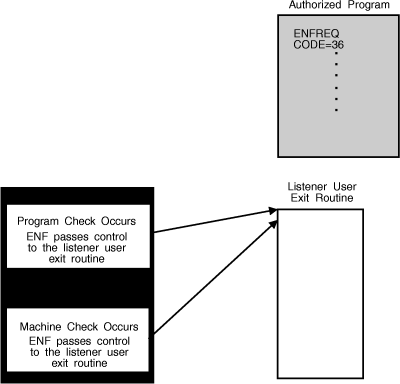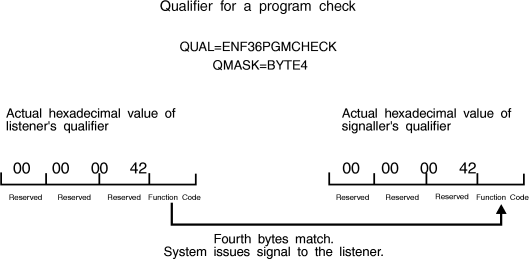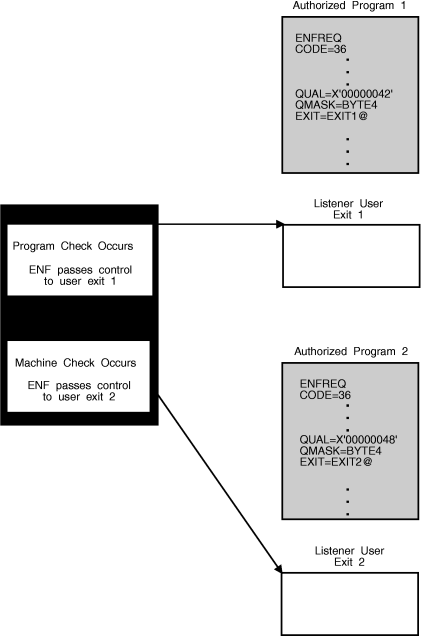ENF36PGMCHECK EQU X'42' Indicates a program check occurred
ENF36MACHCHECK EQU X'48' Indicates a machine check occurred
To specifically define which ENF signals the program should receive, you must code QUAL and QMASK. Figure 2 shows an example of how the QMASK bytes of a listener's qualifier must match the signaller's qualifier. In this example, a listener uses ENF36PGMCHECK, the program check qualifier for event code 36, to request notification when a program check occurs. The listening program sets QMASK to BYTE4, because the fourth byte contains the information that specifically identifies a program check. When a program check occurs, the fourth byte of the signaller's qualifier equals the listener's, and ENF notifies the listener that a program check occurred.

Figure 3 shows two authorized programs that are both listening for event code 36, but they have different QUAL values. Authorized program 1 has a QUAL of ENF36PGMCHECK (which corresponds to a software record for a program check) and a QMASK of BYTE4. Authorized program 2 has a QUAL of ENF36MACHCHECK (which corresponds to a software record for a machine check) and a QMASK of BYTE4.
A QMASK value of BYTE4 tells ENF that it should only use the fourth byte of the qualifier to determine the listener user exit routine that gets control. Note that the authorized programs in this example could use a QMASK of ALL. Because there is no information contained in the first three bytes, ENF would only use the fourth byte. However, because the first three bytes might contain data, IBM® recommends that you use a QMASK value of BYTE4.
